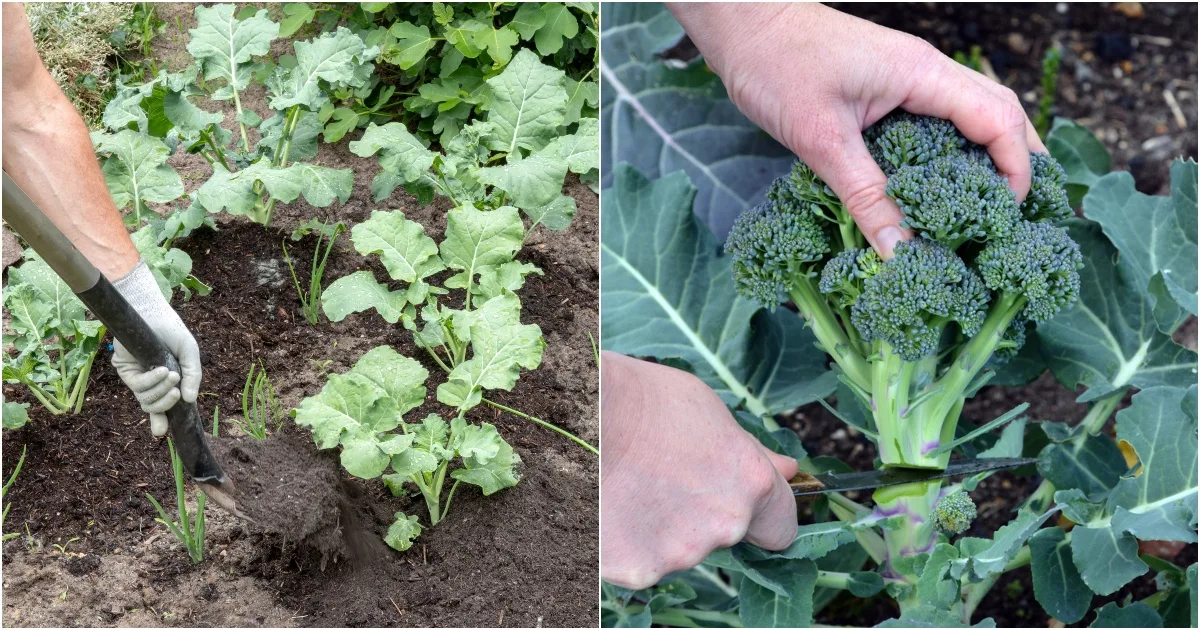
Broccoli may not be the fastest-growing food in the garden, yet it is easy to grow and it gives generously.
If you can wait out the ‘days to maturity’, you’ll be rewarded with green florets of goodness. And spears too. Don’t toss those underused broccoli spears into the trash or the compost pile, cast them into your soup pot instead.
See, there’s never a need to worry about what to eat, or how long things take to grow when you plant a diverse garden. You’ll always find plenty of veggies to fill in the gap. At the same time, you can learn to eat some common garden weeds – in which case you’ll never be lost for nutrients.
Broccoli is said to have a reputation as a superfood.
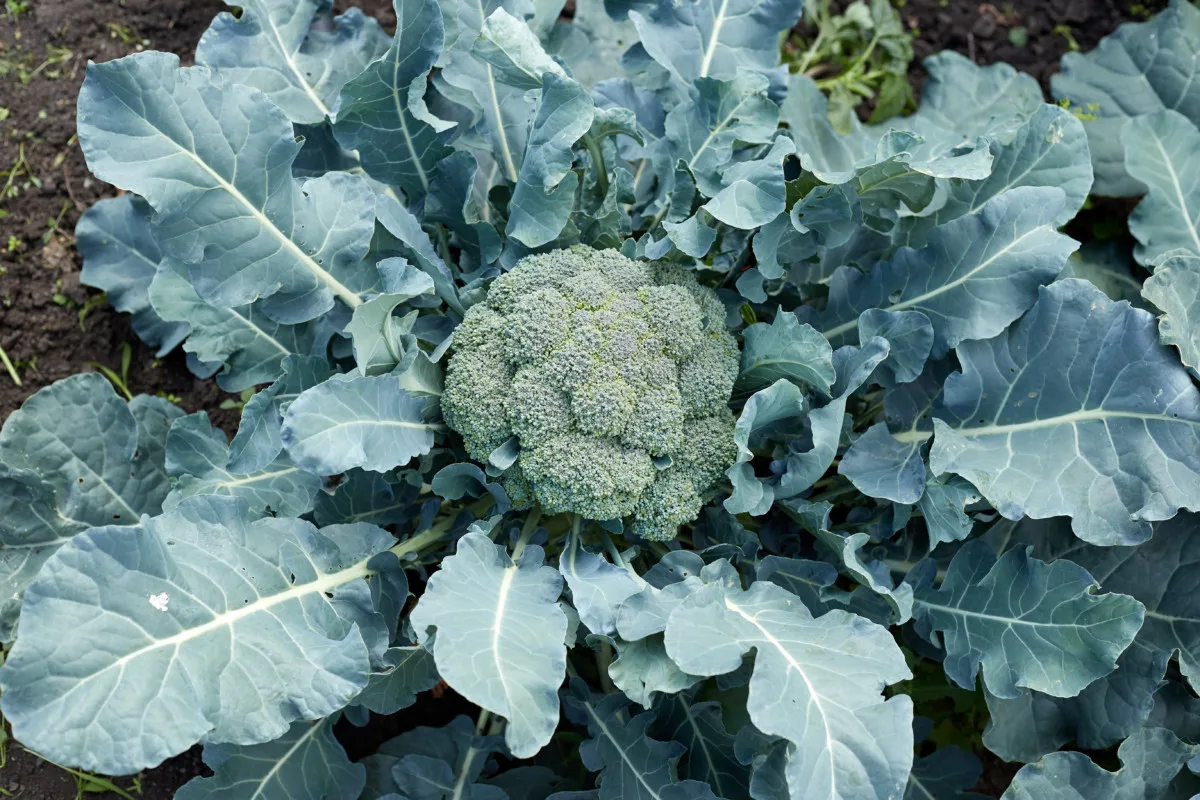
Agree with that or not, broccoli does bring some positive health benefits to the table.
Naturally, broccoli is low in calories, and it contains a significant amount of fiber and is chock-full of antioxidants. Not to mention its vitamin C and calcium content which brings to mind bone health.
Broccoli is almost as super as kale, but not quite as nutrient-dense. It also has a different flavor profile, likable by many and loathed by others (who just need to grow it to find out what real garden-grown broccoli tastes like – it’s good). So, why not plant both kinds of greens in your garden?
Sowing Broccoli Seeds
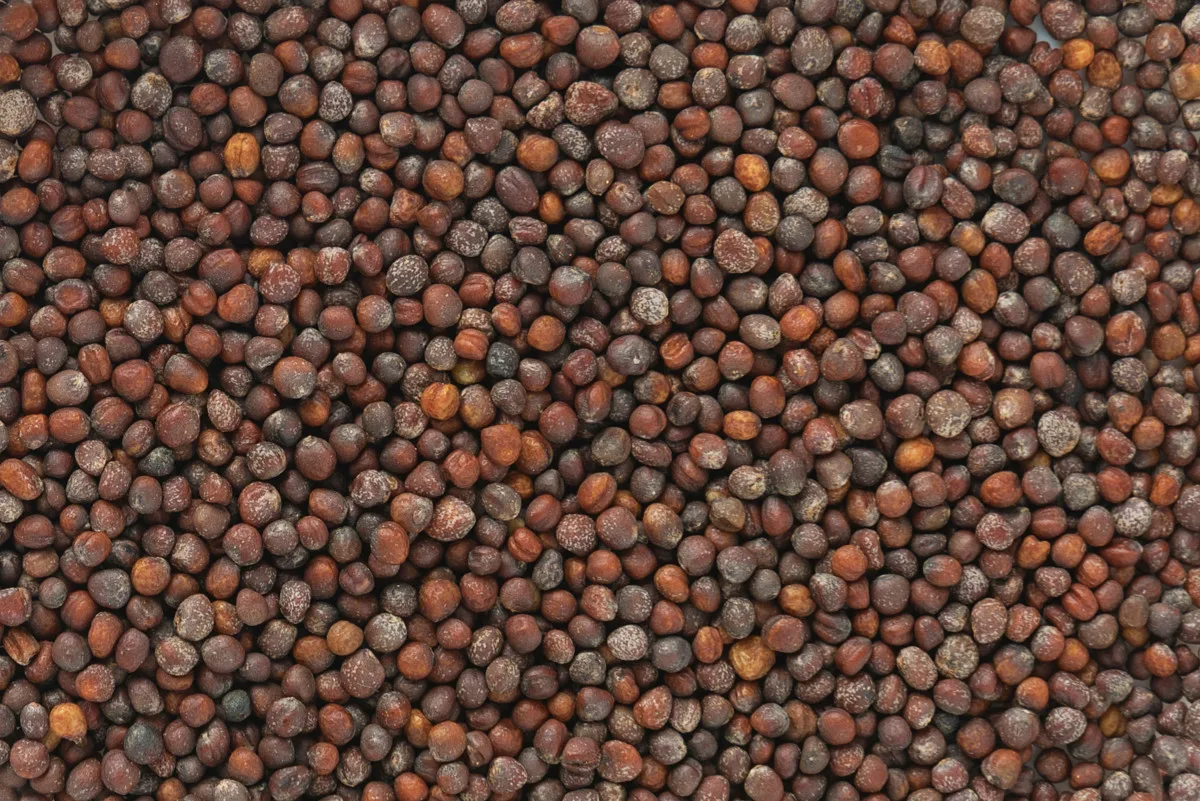
For starters, you need to understand that broccoli is a cool-season plant.
Other cool-season plants include:
- kale
- Brussels sprouts
- Swiss chard
- leeks
- lettuce
- parsnips
- carrots
- cauliflower
- chives
- beets
- radishes
- spinach
- and turnips
Broccoli belongs to the group of cool-season plants that are best started at the beginning of the year. Once you know your last frost date, you can sow the seeds of these ‘cool’ vegetables anywhere from weeks to a couple of months before that frosty date.
Not only do they not mind the cold, they need it for germination in the soil.
In the case of broccoli, seeds can be started in pots, then transplanted. Though it’ll do just as well when seeds are sown directly in the soil.
Starting Broccoli Indoors
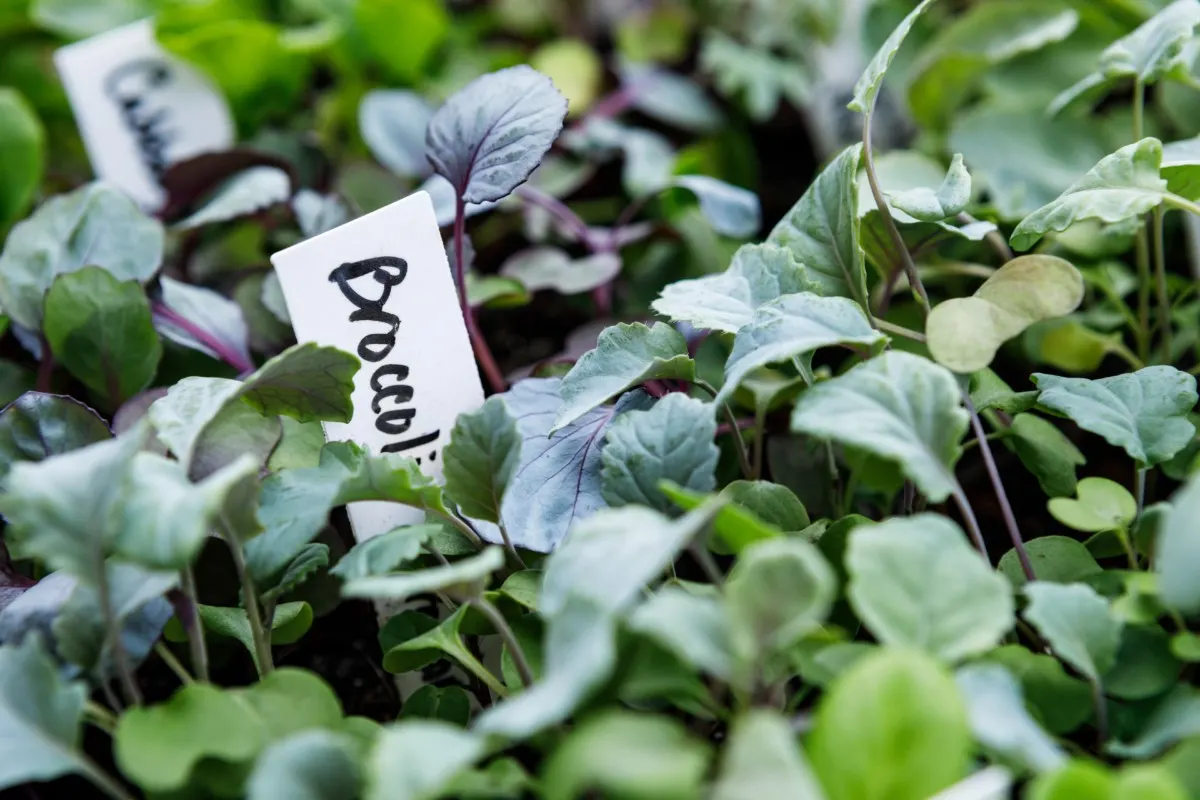
If your spring weather is as uncertain as ours, for example, thunderstorms followed a few days later by snow in April, starting seeds indoors may give you the head start your garden needs in the growing season.
For future broccoli transplants, you’ll want to take a quick peek at that average last frost date. Start your seeds inside about eight weeks before you intend to plant them outdoors.
If you can provide your seeds and planting trays with an optimal temperature of 50-85°F (10-30°C), you should see the seeds germinate in about 7-10 days under the most ideal conditions. In a very rare case, they may take 3 weeks. Just keep an eye on them as you keep the potting soil moist.
As the broccoli sprouts begin to grow, they’ll need more and more light. Grow lights turned on for at least 12 hours a day will urge them in the right direction.
Thinning Container Grown Seedlings
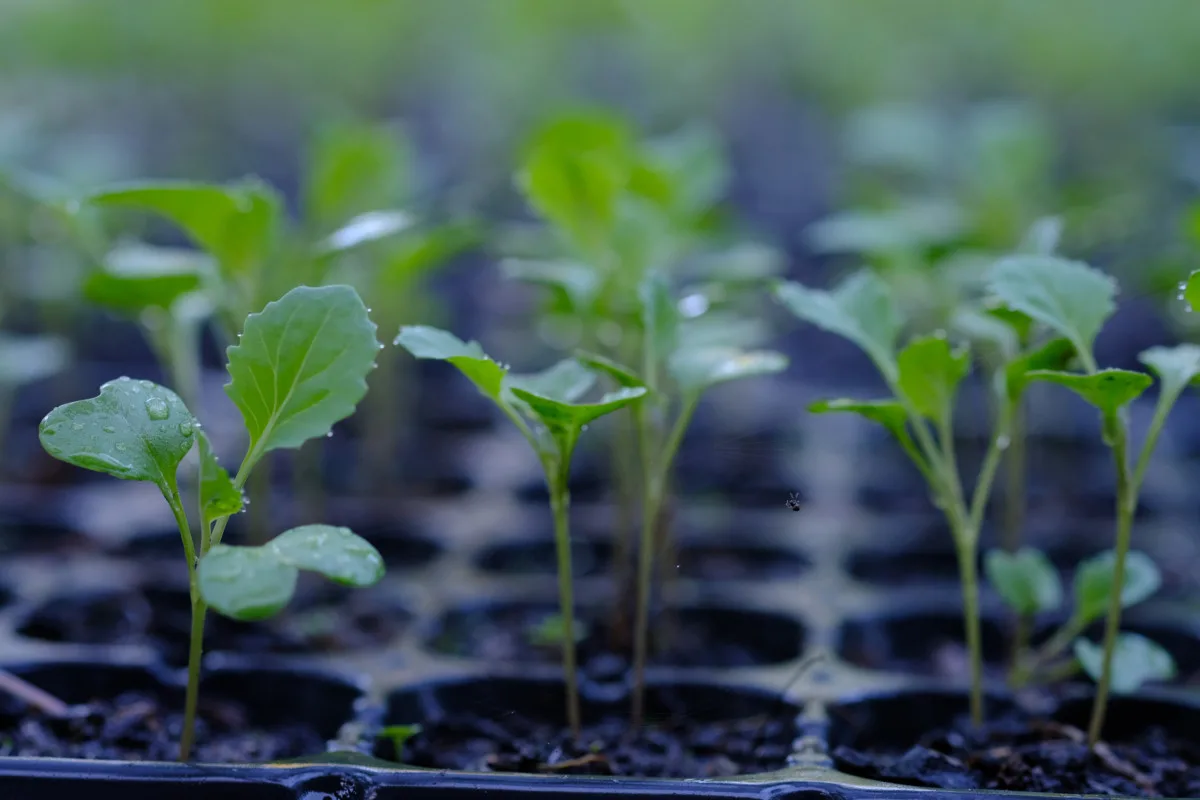
Besides light and water, transplants also need space for their roots to grow.
If your broccoli seeds were sown too close together, be sure to transplant them after the first 3-4 pairs of leaves emerge. This might mean transplanting them into a secondary, 3- or 4-inch pot.
Finally, like all indoor started seedlings, they will need to be hardened off before they are transplanted into the garden soil. This starts with exposing them to colder temperatures each day in an outside area protected from wind, rain and hot sun.
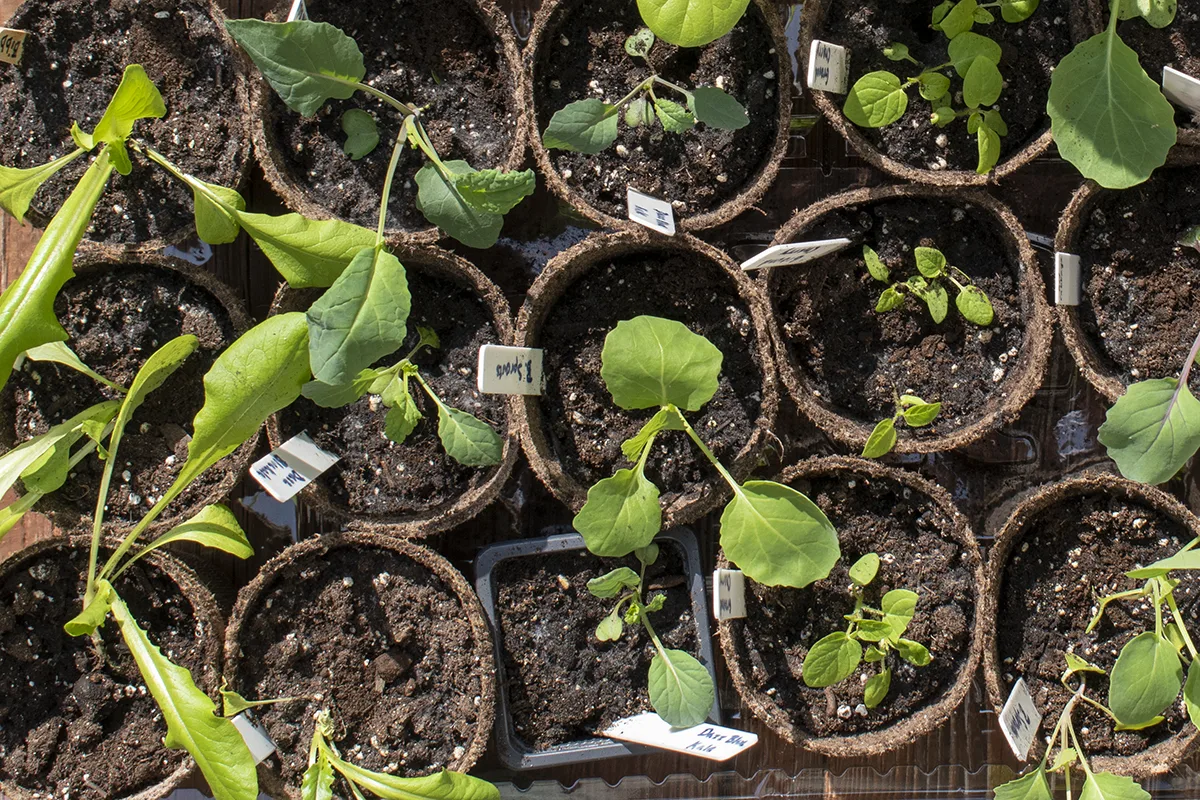
When the nights are too cold, bring them back indoors to safety. It takes about a week of babying your transplants, but it’s so worth it. Hardening off reduces transplant shock and scalding, at the same time ensuring you don’t have to start over from the beginning.
Direct Sowing of Broccoli Seeds
If you’d like to take an easier route to planting, follow me. Rarely do we start seeds inside, instead leaving germination up to nature. We’ve found our no-dig garden to be much hardier this way.
Direct sowing of seeds also works out perfectly well when you don’t have a warm enough or sunny enough space indoors to start seeds.
So, if you are patiently awaiting planting day, here’s what you need to do:
It’s said that broccoli needs full sun to grow. I beg to differ – a little shade doesn’t hurt either. So long as it receives 6-8 hours of sunlight a day, it’ll grow just fine.
When you start pulling lines for your seeds, don’t dig, rather gently pull the soil. Broccoli seeds should be planted just 1/4″ deep. Let the rain come in and do the watering for you, otherwise use a hose or sprinkler. Just keep the watering soft and light.
Broccoli seeds sown outdoors will germinate in a similar amount of time as those started indoors however this option will only be suitable for climates with cooler summer temperatures. When dropping seeds into the soil, go ahead and over-sow. Drop a seed about every 4-6″ or so.
Later, this surplus can be transplanted into the bare spots of your garden.
Tips for Growing Broccoli
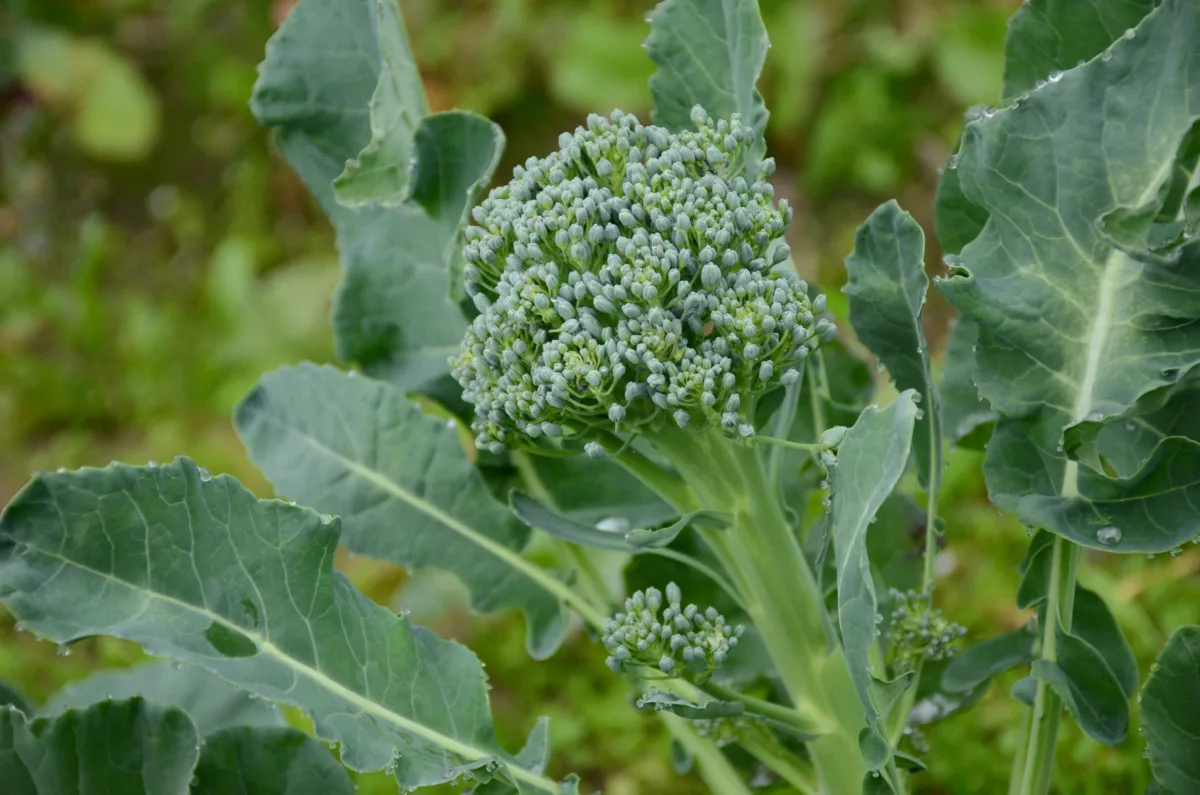
As previously mentioned, broccoli is one of those easy-to-grow vegetables. Yet it is your job to know what it needs. Rather than asking it too many questions, simply know what it needs based on the experiences of other gardeners. As the season progresses, be sure to take notes of your own too – what works and what doesn’t in your garden.
There are essentially two times when you can plant broccoli. The first we’ve already mentioned. Starting seeds in early to mid-spring for a summer harvest.
However, you can also plant in summer for a fall harvested crop. This is best if you have very hot summers with temps well above the 80s.
Spacing Broccoli Transplants
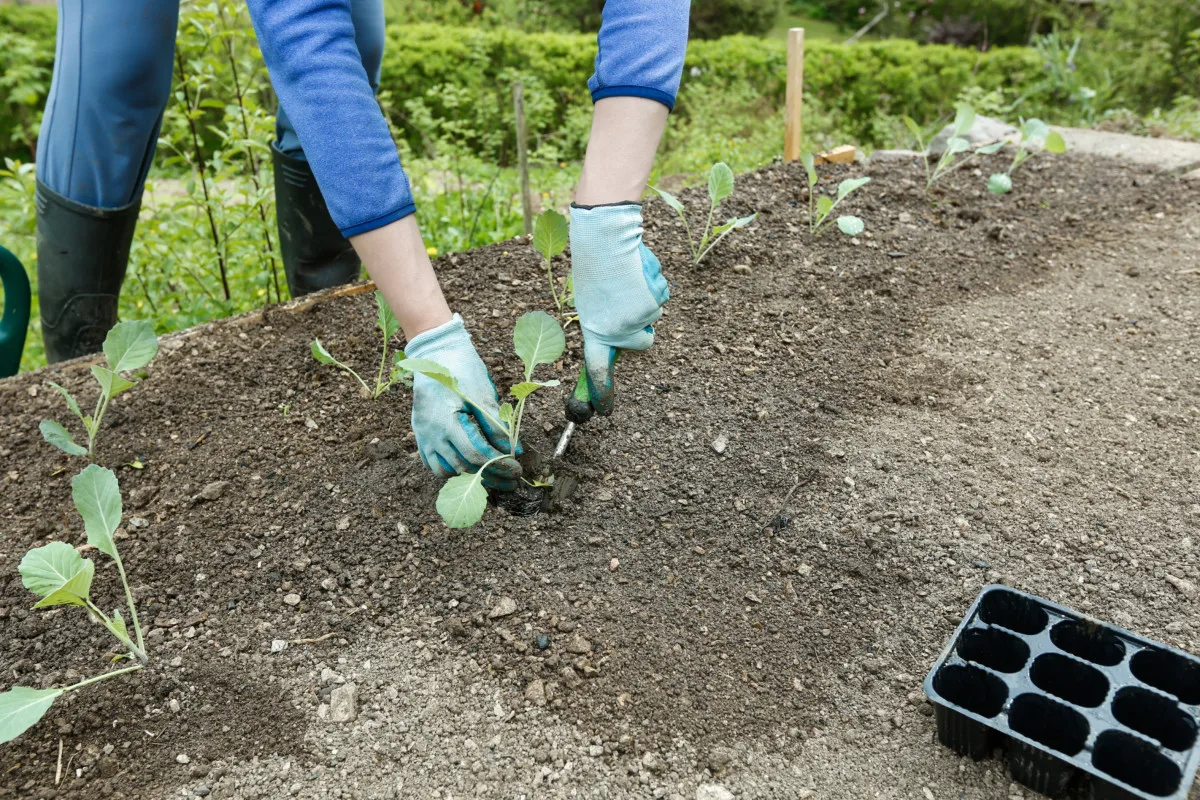
Plant spacing is an issue that gets a lot of misrepresentation. Although the general guidelines are listed on each seed pack, most gardeners dream we can get away with whatever spacing we have room for in our always too tiny gardens. Isn’t that the truth?
Even with sowing seeds, it’s all too easy to get carried away using up the whole seed packet at once. Is anyone else out there guilty of that? Or do you have the self-restraint to put in the ground only what you need?
But, for the sake of the full-grown plant, each stem of broccoli needs to stand alone. Broccoli should be thinned, or spaced, to 18″ apart in rows. Rows being 24″ apart.
Try it out and see if it doesn’t improve your broccoli harvest.
Mulch
No garden should be without mulch. I know, this is a very biased opinion, yet it’s based on decades of personal gardening experience in different climates. It is beneficial every time, provided that you select the right kind of mulch.
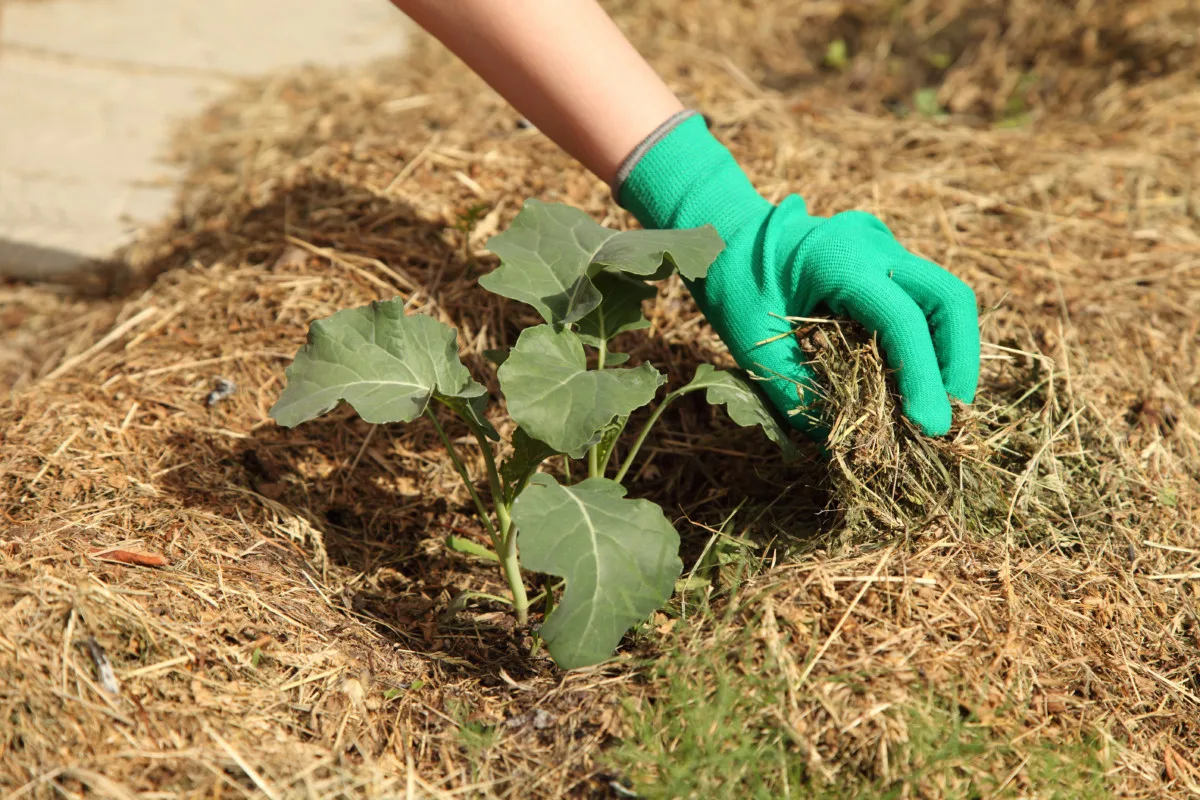
Mulching around your broccoli is no exception. One may even say that it is critical to the success of growing broccoli, because it prefers cool soil.
Like most other plants in the garden that do well with a layer of mulch, like tomatoes, peppers, eggplants, squash and zucchini, the same benefits apply.
Quick benefits of applying mulch to your garden, broccoli included:
- prevents soil moisture loss
- keeps soil at cooler temperatures
- suppresses weeds
- and keeps vegetables off the ground
This last mulching benefit comes in handy, especially when growing softer fruits (tomatoes, eggplants and peppers) that are more susceptible to disease.
Broccoli Pests and Diseases
If you’ve only eaten store-bought broccoli, you may be surprised at all it’s been through to get to your table.
Shipping, handling and harvesting set aside, broccoli is also subject to several potential pests and diseases, including fungi, bacteria, viruses, insects.
Running quickly through the list, here are some of the troublesome aspects associated with growing broccoli:
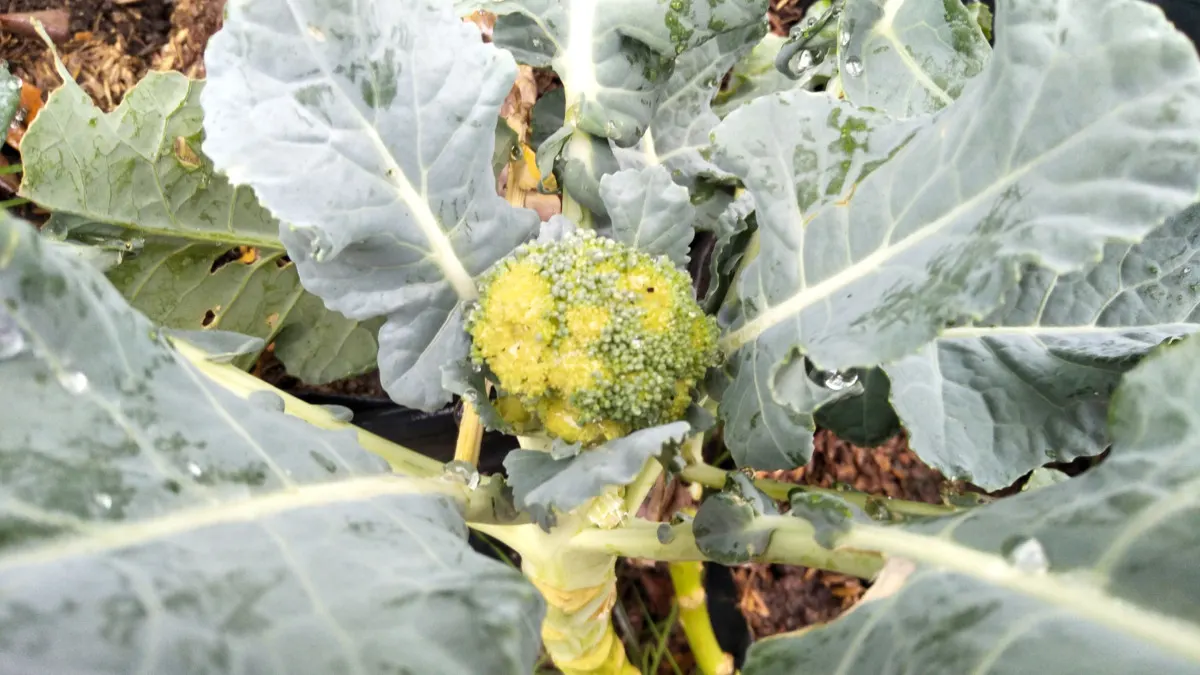
- Alternaria leaf spot (Alternaria brassicae) – a fungus that causes multiple, small dark spots and discolored leaves on all Brassicas. If left untreated, it can transfer to the heads as well.
- Black rot (Xanthomonas campestris) – is a bacteria that develops first as yellow blotches on the side of leaves, expanding into “V-shaped” areas at the base of the head. It’s not something you want to deal with, or eat.
- Powdery mildew (Erysiphe cruciferarum) – another fungus that begins with white patches on the leaves until it covers the entire plant with a powdery mass of white mycelium. The best prevention for this is crop rotation and choosing resistant varieties.
- Sclerotinia stem rot or white mold (Sclerotinia sclerotiorum) – is a fungus that attacks all Brassicas. As the name suggests, infected plants get soggy, rotten spots which cause the plant to turn soft and die back. Water at the soil level, rather than from up above, to help prevent this fungus.
- Mosaic virus – a broccoli and cauliflower threatening aphid-borne virus, that can cause loss of heads, is nothing to take lightly. Try companion planting, for starters, to reduce aphids in the garden, and isolate contaminated plants.
- White rust (Albugo candida) – another fungus that is spread by the wind, will infect broccoli leaves, stems and flowers with white pustules.
- Black leg (Phoma lingam) – if it’s starting to become apparent that fungus may be a problem with growing broccoli, you’re right. Again, you’ll notice brown spots on the leaves, and underground the roots will rot away.
- Wirestem or Damping-off (Rhizoctonia solani) – yet another fungus that attacks all Brassicas, where the stem of the seedling rots away. It is favored by warm and wet soil conditions.
You’ll also need to watch out for moth larvae, flea beetles and cabbage worms.
But don’t let that dissuade you from eating a plateful of roasted broccoli, for these are only “what-ifs” that may come to nothing in your garden.
Broccoli Varieties to Grow
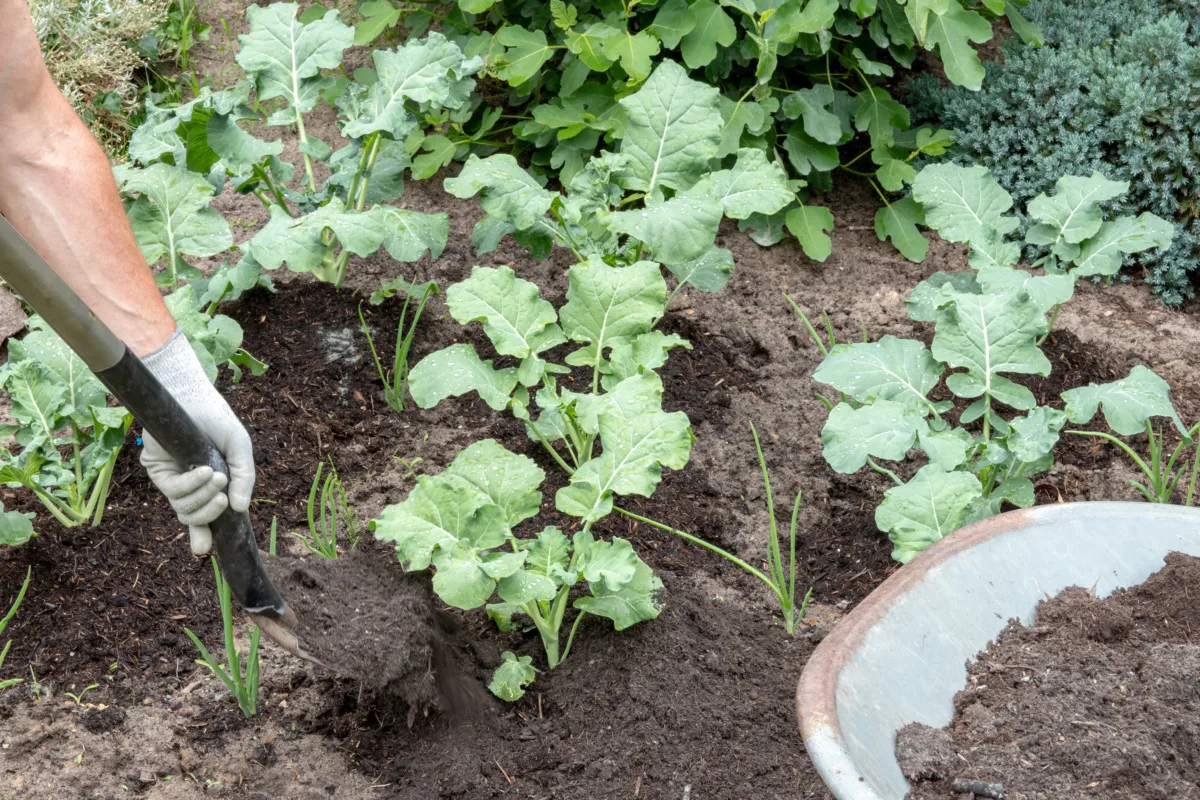
Those who are new to growing broccoli often ask the same questions, starting with: which broccoli variety is the easiest to grow?
Let me break this to you very gently – cultivating that perfectly formed store-bought head of broccoli takes the right seeds, in the right soil, with the right amount of fertilizer and the right amount of watering. But not being able to recreate that in your own garden doesn’t make you wrong.
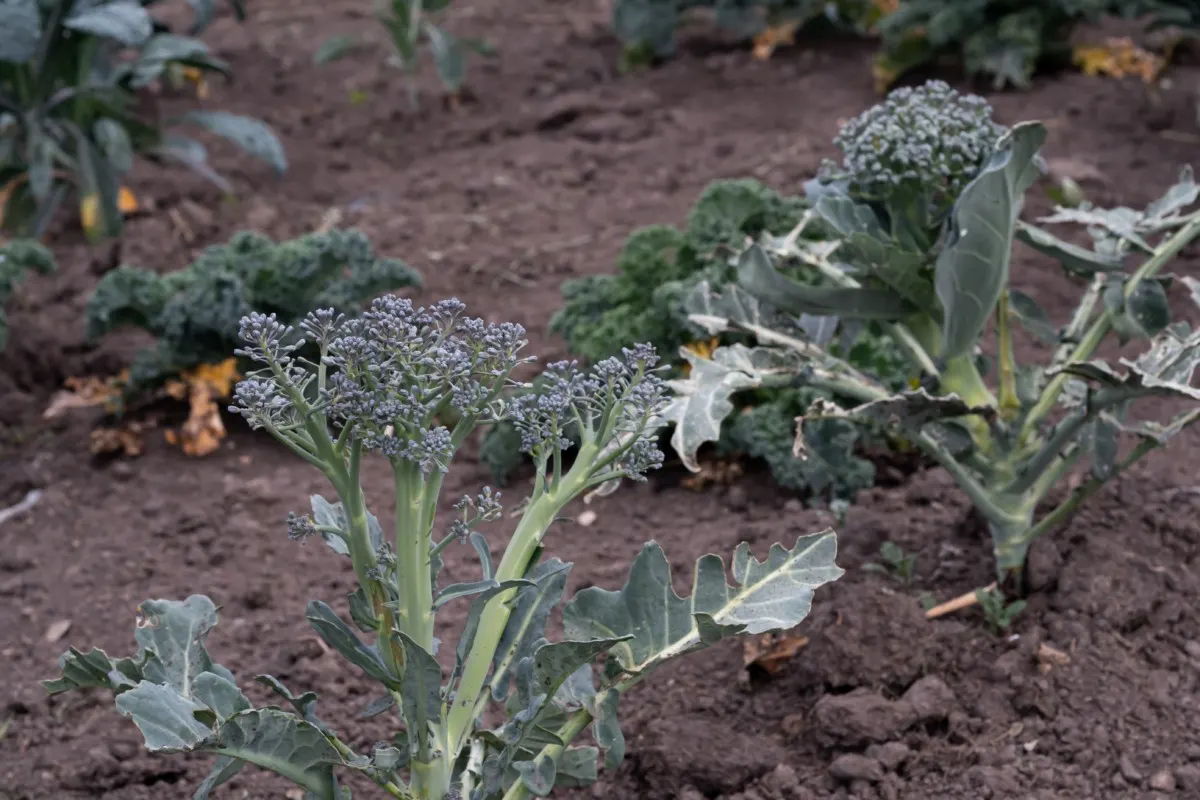
Though, perhaps you’d be better off starting with some non-heading varieties which are less demanding of you and your precious time. Like broccoli raab, a faster-maturing type of broccoli that is more closely related to the turnip.
Either way, know that there are plenty of broccoli varieties to choose from. Also keep in mind that broccoli stalks and flowers are edible too – as long as your crop is healthy, nothing needs to go to waste in your garden.
It’s also important to choose a broccoli variety best suited to your climate.
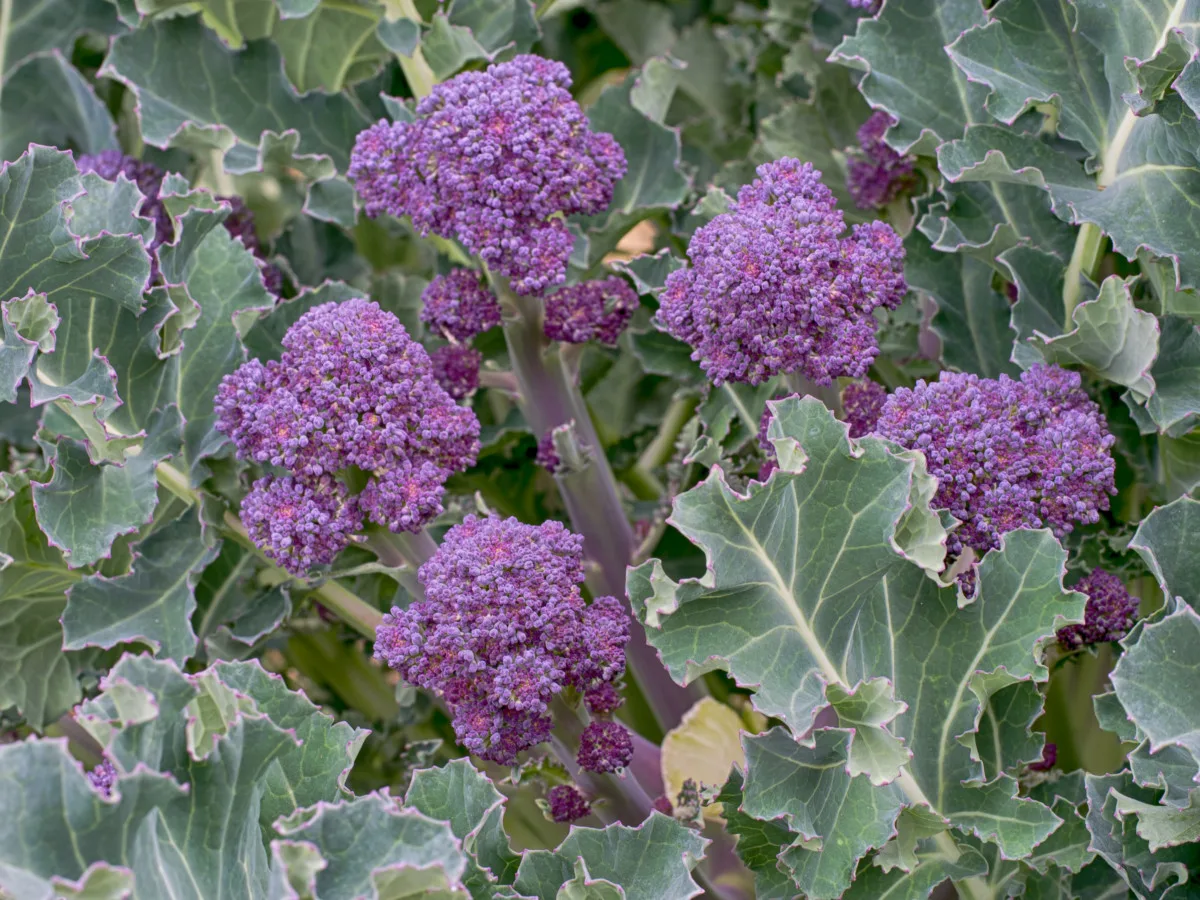
If broccoli is a must-grow crop in your garden, check out the following heading varieties:
Calabrese – At the top of the list is a true heirloom: Calabrese broccoli. Open-pollinated seeds can be started outdoors or in-, maturing around 60 days for a fairly quick harvest. Better yet, it will continue to produce side shoots until the first frost, giving you a continuous supply of fresh greens. Plants grow 18-30″ tall.
Waltham 29 – If you are searching for a more compact plant with standard green heads, look no further than Waltham 29, a variety that reaches maturity in 75 days. Direct sow outdoors 2-4 weeks before last frost date. For a second crop, sow seeds again in midsummer for a fall harvest.
Sun King – In search of a more standard broccoli shape, you’ll find that many hybrids fit the bill. While you can’t save the seeds, you can indulge in large, well-formed heads that become even sweeter when touched by fall frosts. With just 70 days to maturity and a height of 14″, Sun King is perfect for smaller spaces and container gardening.
Belstar – Where summer heat is a concern, you’ll need to seek out heat-tolerant vegetables. You’ve just found one in Belstar broccoli. As with Calabrese, it will also continue to send out edible shoots as the season goes on, leaving you with plenty of crisp florets to munch on from multiple harvests.
Romanesco – Not a true broccoli, but rather a beautiful and edible art form with spiraling florets. 5-6″ lime green heads are as ornamental as they can get, with a distinct flavor and texture more similar to cauliflower. 36″ tall, heirloom.
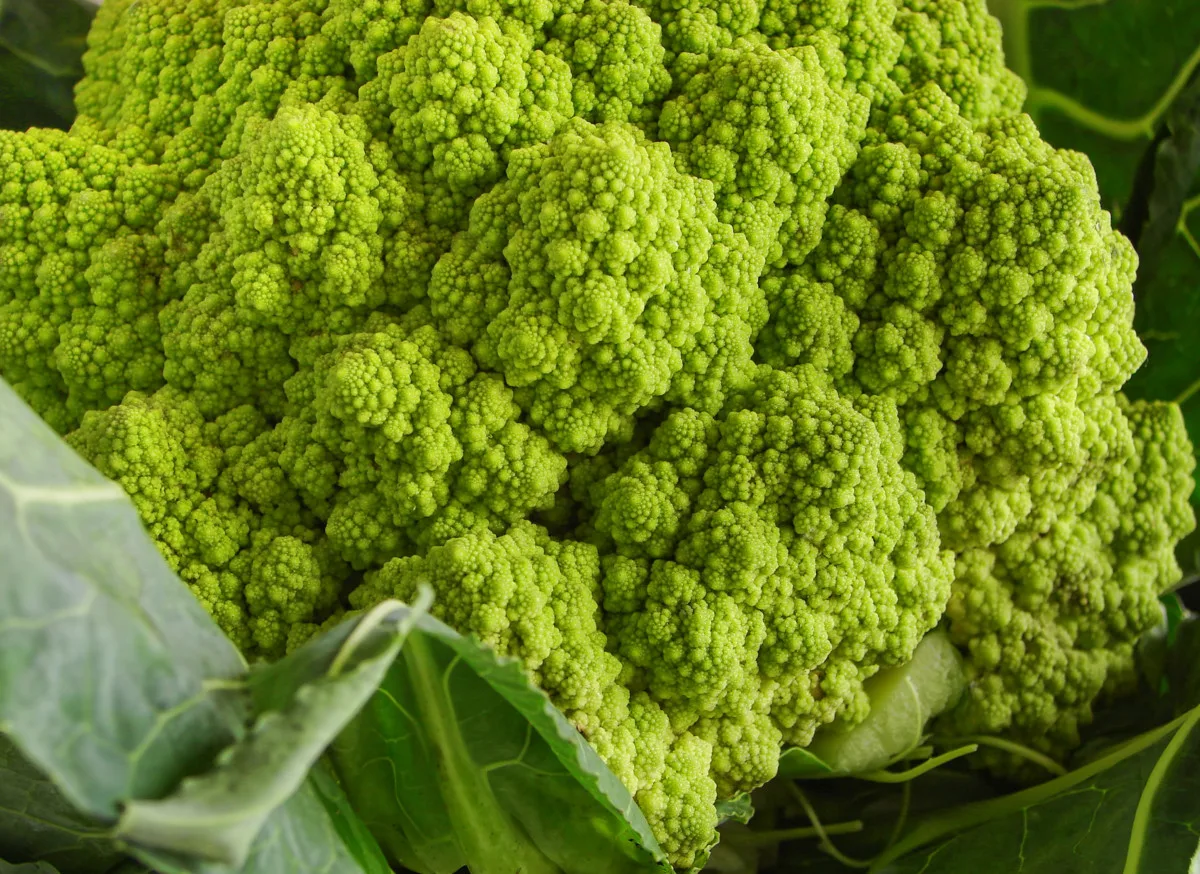
Non-heading Broccoli Varieties
Broccolini – Lesser known broccoli varieties are perfect for those who like to entertain, or make a little side money selling garden crops at the market. Broccolini is an exceptional variety that one could consider “stem broccoli” with longer asparagus-like stems. Being a headless variety, it’s easy to grow and it matures in 50 days. A definite plus!
Broccoli Raab – If you adore the flavor of broccoli, but aren’t so concerned about the formation of heads, it’s time to try out some broccoli raab. It’s an open-pollinated variety that mostly forms an abundance of leaves with thin stems and delicate buds. A fantastic variety for continuous harvest.
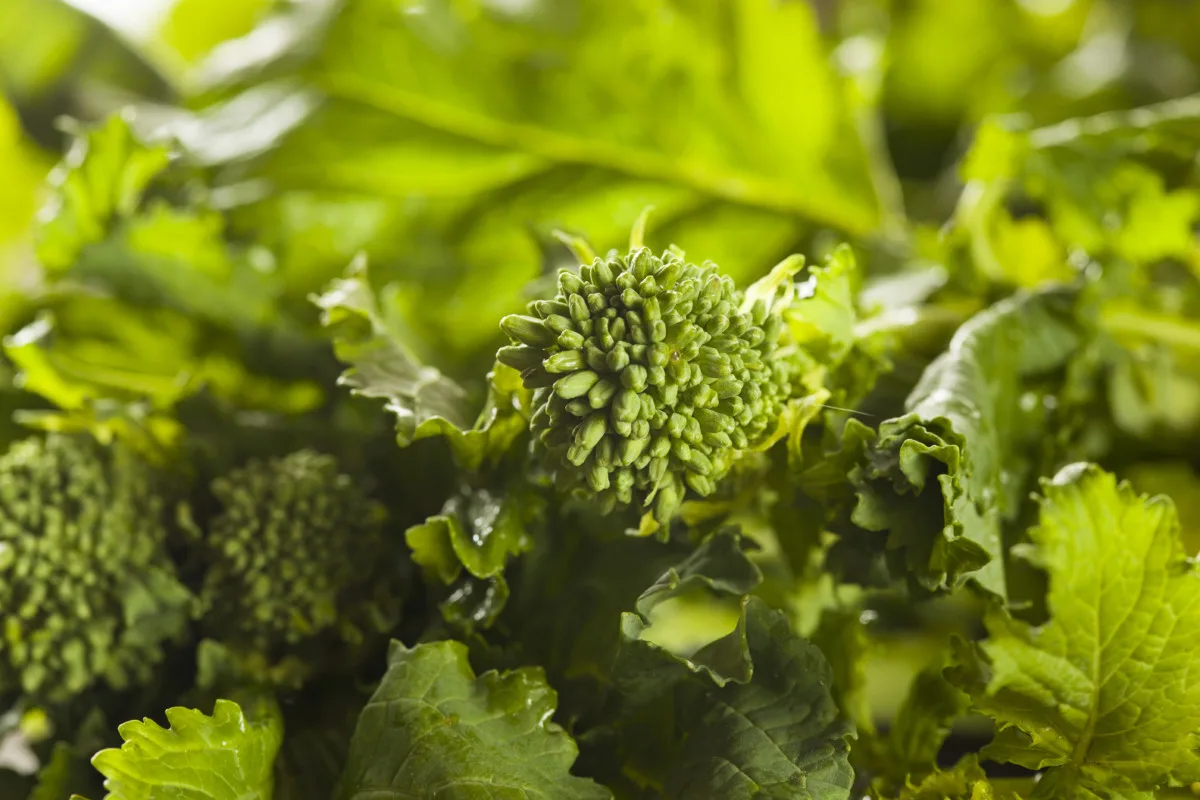
Chinese Broccoli – Here is another easy-to-grow variety that can easily be substituted for regular broccoli in any recipe. Again, you’ll mostly be harvesting stems and leaves, with the occasional stemmed floret. But we know you’ll find the beauty in its simplicity. Greens are top-notch for stir-fries and delicious when steamed or boiled. 24-30″ tall, matures in 60-70 days.
Italian Leaf Broccoli – Or you can forget about heads and florets altogether and just go for the greens. This leafing variety from Southern Italy (Spigariello) is perfect for gardeners seeking a continuous harvest. If, when and where it grows well, the leaves can reach a height of 3-4′.
Sprouting Purple – Sometimes you just have to save the best for last. Purple-sprouting broccoli is probably the most showy with its stunning florets. It’s also a variety that’s proven its tolerance to cold, plus it gets bonus points for being one of the earliest garden crops to harvest. Plants can reach up to 3′ in height and may need to be staked.
Quick gardening tip: plant all varieties of broccoli near nasturtiums to repel cabbage worms and loopers.
Harvesting Broccoli
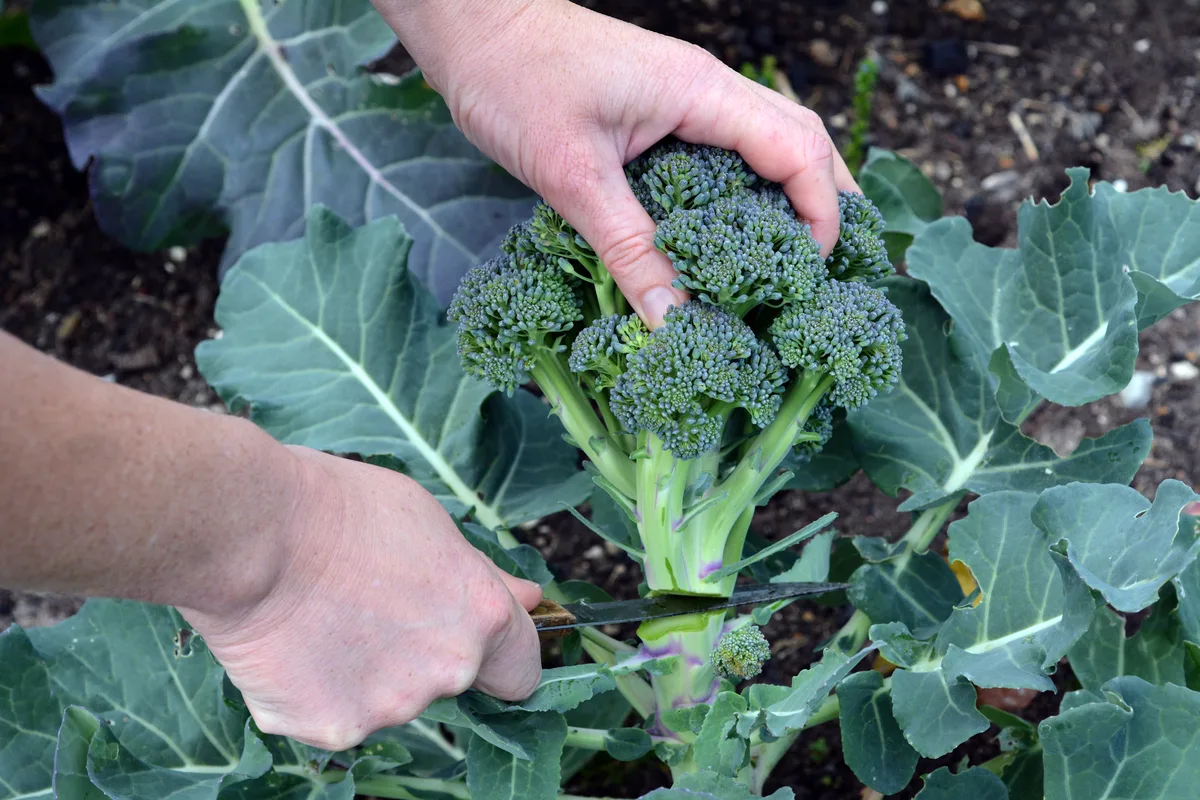
The long-awaited harvest comes when the plants reach maturity.
In order to get there, however, you may have had some challenges, particularly with heat, which causes broccoli to bolt.
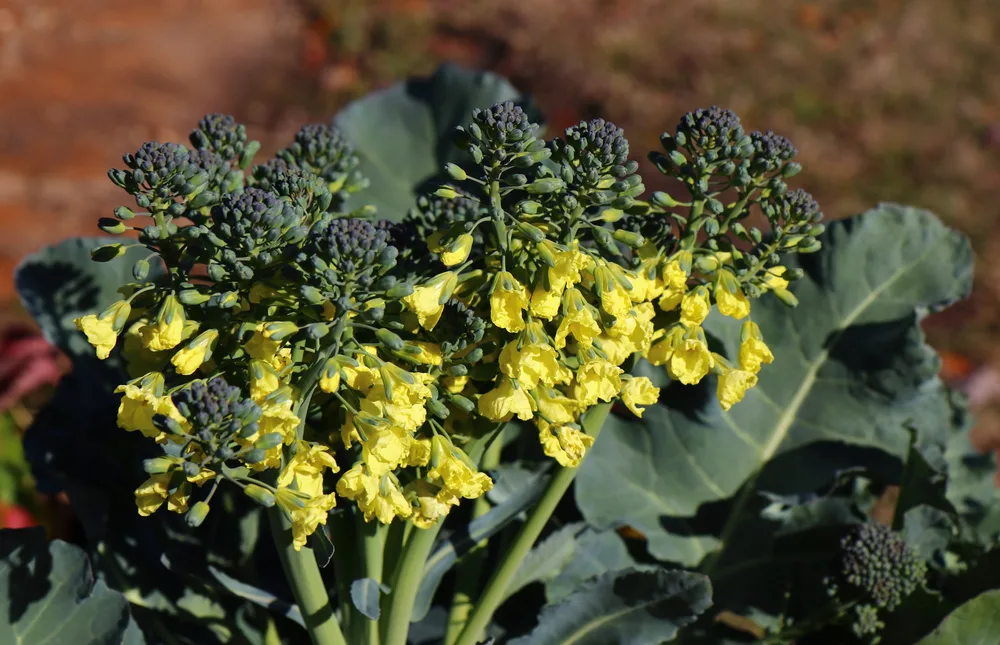
If you managed to get some well-formed heads, congratulations. If not, there’s always next year, or another variety to try.
Outside of following the ‘days to maturity’ there are other signs to look for as to whether or not your broccoli is ready to harvest:
- head formation – depending on the variety you planted, check for tightness/firmness of the head.
- size of head – broccoli often grows heads of not more than 4-7″. Don’t look at size alone.
- floret size – broccoli florets should grow to the size of a match head and ideally should be eaten before flowers open up – though if it reaches this stage unexpectedly, it’s more than okay to eat your broccoli with the flowers on. In fact, it’s super delicious!
- color – green or purple is the color you are aiming for when harvest time comes. As soon as the florets start turning yellow, pick them immediately – unless you intend to let the broccoli plant go to seed.
One last broccoli growing tip before you go…
As you grow your gardening skills, you’ll gradually find new-to-you ways of gardening, that include age-old ways of cultivating the land.
This includes crop rotation.
All you need to know, for the moment, is that broccoli, and all other brassicas, should never be planted in the same place two years in a row. They should always be rotated within the garden from season to season, even if they only move a few feet. This helps to prevent soil diseases from spreading.
To visualize this – broccoli should be planted where legumes grew the season before.
The following year – you can plant fruiting crops such as tomatoes, peppers, eggplants, cucumbers, melons and squashes where the broccoli was.
If it all seems a bit complicated, never fear. With time, experience and a well-drawn garden plan, you’ll get the concept in no time at all.

Get the famous Rural Sprout newsletter delivered to your inbox.
Including Sunday musings from our editor, Tracey, as well as “What’s Up Wednesday” our roundup of what’s in season and new article updates and alerts.

